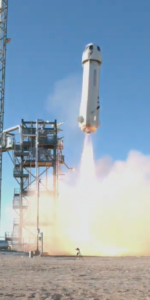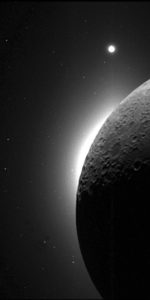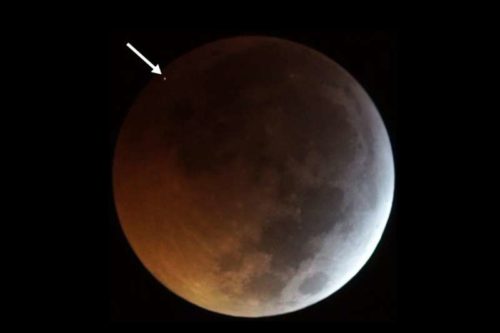
The lunar eclipse last Sunday – the so-called “super wolf blood moon” – was spectacular, with thousands of great images being taken by skywatchers. But some keen-eyed observers also noticed something else a bit later when examining their photos – a tiny bright dot of light on the left side of the moon, during totality. What was it?
It turns out that, by lucky timing, there was a meteorite impact on the moon during the eclipse!
One of the first mentions of this event was by Will Gater on Twitter:
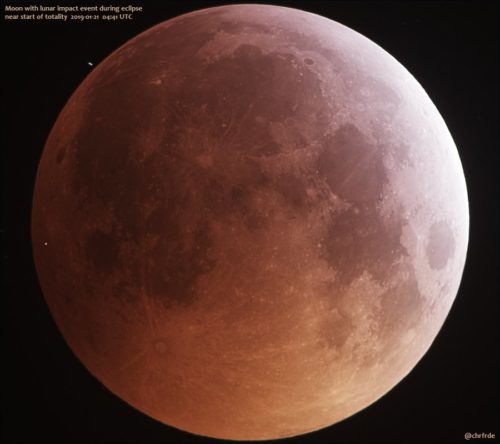
As he noted, there were some visual observations of this as well, along with the photos and video taken.
Observers narrowed down the impact site to west of Mare Humorum, and then just south of the 88-km wide crater Byrgius.
The flash of the impact can be seen in at least three different videos, as well.
Jose Maria Madiedo at the University of Huelva in Spain was one of the observers to confirm that the flash really was from a meteorite impact – he and his colleagues have been hoping for years to observe a meteorite impact on the moon during a lunar eclipse. They recorded the impact as happening at 5:41am Spanish Peninsular Time.
“I had a feeling, this time will be the time it will happen,” said Madiedo. “I was really, really happy when this happened.”
“We monitor the nocturnal region of the Moon to identify impact flashes. In this way, these flashes are well contrasted against the darker background,” Madiedo explained. “So, we usually monitor the Moon about five days after the New Moon, and around five days before the New Moon. We also monitor during lunar eclipses, since during these eclipses the lunar ground is dark.”
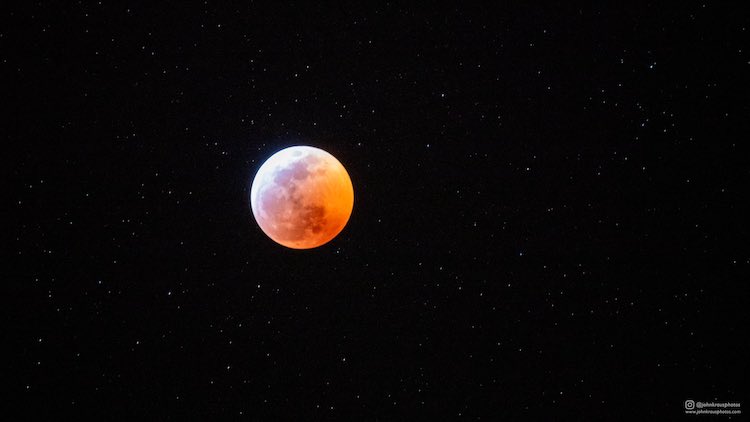
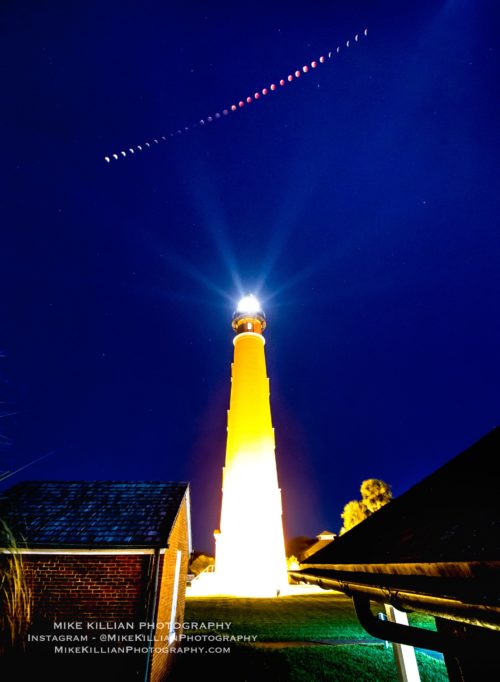
“In total I spent almost two days without sleeping, including the monitoring time during the eclipse,” Madiedo said. “But I made the extra effort to prepare the new telescopes because I had the feeling that this time would be ‘the time,’ and I did not want to miss an impact flash. One instrument had a technical issue and failed. I was exhausted when the eclipse ended – but when the automatic detection software notified me of a bright flash, I jumped out of my chair. It was a very exciting moment because I knew such a thing had never been recorded before.”
“The combination of a darkened surface and a lot of people watching made it much more likely that the flash of impact was seen – and it reminds us that the solar system is still a very dynamic place,” said Robert Massey at the Royal Astronomical Society.
By studying such impacts, scientists can better understand the rate at which they occur. Another recent study has suggested the rate of impacts on the Moon increased about 290 million years ago, for reasons unknown.
Such impacts have been seen and filmed numerous times before, but not during a lunar eclipse. The fact that this one did coincide with an eclipse makes the event all that more fascinating and memorable.




